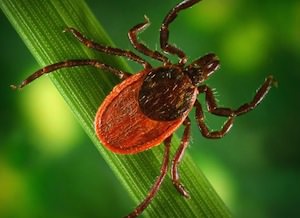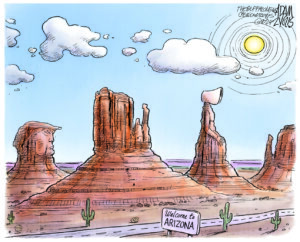What We Learned About Lyme in 2012
It’s too early to tell whether 2012 was the worst year ever for Lyme disease, as experts predicted it would be, but a number of the pieces of the puzzle over the controversial illness are falling into place.
It’s too early to tell whether 2012 was the worst year ever for Lyme disease, as experts predicted it would be, but a number of the pieces of the puzzle over the controversial illness are falling into place.
In an article published in The New England Journal of Medicine last month, researchers reported that what seemed to be persistent disease and relapse caused by a single infection of the tick-borne spirochete Borrelia burgdorferi turned out instead to be the result of one or more new infections.
Almost 25,000 cases of Lyme disease, which can cause cognitive problems and musculoskeletal pain, were confirmed by the CDC in 2011.
Other researchers tracked the change in tick territory through its various animal hosts. The emergence of the disease in the 20th century was often attributed to an increase in the deer population, but recent study shows smaller mammals that carry ticks during the nymphal stage of development — during which transmission of the bacteria occurs — may play a larger role in spreading the disease than was previously understood.
Coyote populations, which have grown as the gray wolf nears extinction, have reduced the size of red fox populations. This has led to a rise in the number of mammals that can carry the bacteria, including the white-footed mouse, the Eastern chipmunk and two types of shrew — “animals that are responsible for the infection of up to 90% of ticks with B. burgdorferi.”
— Posted by Alexander Reed Kelly.
Your support matters…MedPage Today:
“Detailed studies and experimental manipulation of predators could help elucidate whether controlling Lyme disease might be best accomplished by a combination of predator manipulation and severe reductions in deer densities necessary to reduce tick abundance,” they wrote.
“More broadly, these results suggest a need to explore the role of predation in the community ecology of other emerging zoonotic diseases, which overwhelmingly rely on hosts that occupy low trophic levels,” they stated.
They concluded that greater attention should be paid to the wider ecologic patterns of predatory animals, which “may have unintended consequences for human disease.”
Independent journalism is under threat and overshadowed by heavily funded mainstream media.
You can help level the playing field. Become a member.
Your tax-deductible contribution keeps us digging beneath the headlines to give you thought-provoking, investigative reporting and analysis that unearths what's really happening- without compromise.
Give today to support our courageous, independent journalists.









You need to be a supporter to comment.
There are currently no responses to this article.
Be the first to respond.